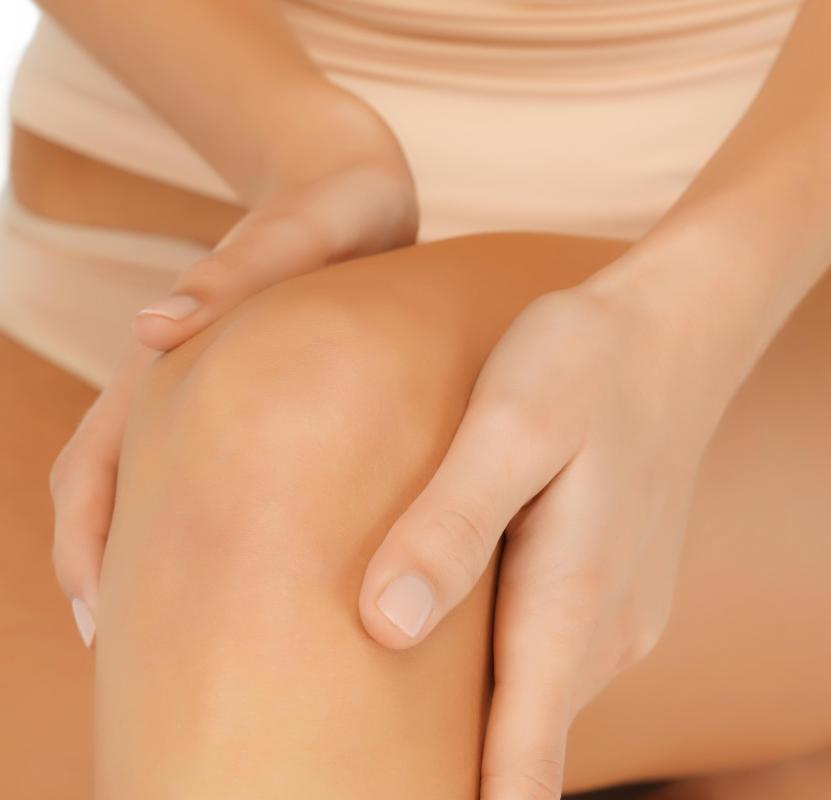At TheHealthBoard, we're committed to delivering accurate, trustworthy information. Our expert-authored content is rigorously fact-checked and sourced from credible authorities. Discover how we uphold the highest standards in providing you with reliable knowledge.
What is Genu Valgum?
Genu valgum is the medical term for knock knees, a condition where the lower legs angle outward. A mild form of the condition is very common in children under the age of six, and typically disappears as the leg bones and muscles continue to develop normally. When genu valgum persists into adolescence, however, doctors may consider bracing, physical therapy, and anti-inflammatory drugs to ease discomfort placed on the knee joints. Surgical treatment may be necessary if the condition is still present in adulthood, after the legs stop growing.
A person with genu valgum is unable to keep his or her feet together when the knees are touching. When standing up straight, the legs angle outward from the knees. Walking looks awkward since the afflicted individual must swing his or her leg outward when stepping to avoid hitting the other knee, hence the term knock knees. Many children between the ages of two and six exhibit signs of mild genu valgum as their leg bones and motor skills develop.

Most people completely grow out of the condition at around six years of age, though individuals with congenital bone disorders or metabolic problems may retain genu valgum. Poor nutrition, childhood obesity, Down syndrome, and rickets can also contribute to persistent genu valgum. A doctor usually tries to identify and treat the cause of knock knees to promote proper bone growth and development. When the cause cannot be determined or treatment measures are ineffective, a physician can consider more direct treatment options.

A person between the ages of 10 and 18 who still has knock knees may suffer from chronic leg pain and be limited in physical activity. A doctor can conduct a thorough physical exam to determine the severity of genu valgum and the length of the legs before deciding on a treatment. Many adolescents are prescribed anti-inflammatory drugs to combat pain in the knees. An individual may be fitted with corrective knee braces that encourage the bones in the lower legs to grow straighter. Physical therapy is an option for those with less severe knock knees so they can learn to overcome the condition.

Corrective surgery is usually reserved for patients who still have genu valgum after their leg bones have fully developed. The most common procedure for patients with knock knees is known as an osteotomy. A surgeon can remove and reshape bone tissue near the knees to straighten the legs and take pressure off of the joints. Surgical procedures are often effective at improving the cosmetic appearance of knock knees, though a postoperative patient may be unable to engage in strenuous activity. With ongoing physical therapy and regular medical checkups, however, many people regain recover fully from their knee problems.
AS FEATURED ON:
AS FEATURED ON:



















Discuss this Article
Post your comments